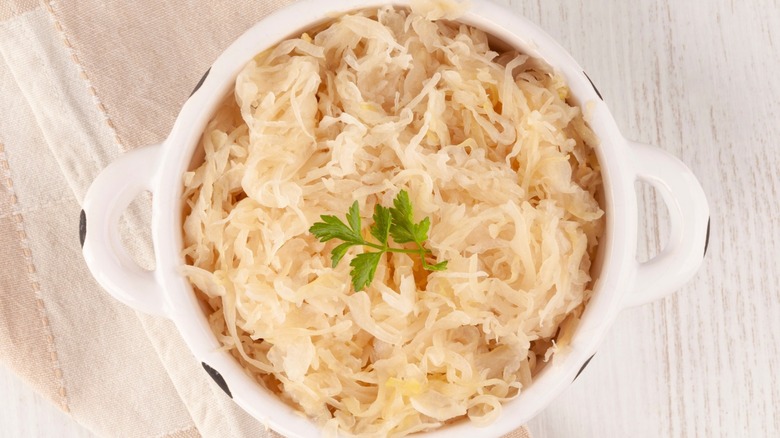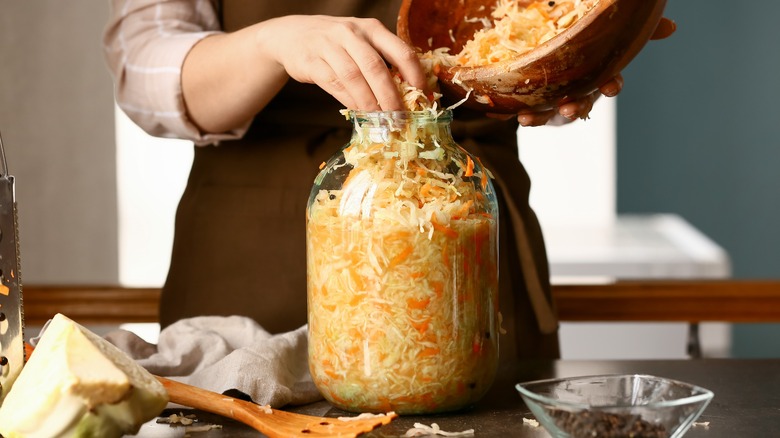The Sauerkraut Myth You Should Stop Believing
The idea that sauerkraut originated in Germany, though logical — considering its very German name — might very much be a myth. The fermented food actually hails from the far east.
There is a historical food culture of fermentation in Asian countries. According to a study published in the journal Hindawi, although it had and still has a high social value, its function was mainly to preserve food. Japan, for example, has unique bacteria that thrive naturally in its humid climate. The Japanese have manipulated this bacteria through the centuries to preserve foods like narezushi (the oldest version of sushi), soy sauce, and rice koji. Another example is Korean kimchi. According to BBC Travel, winter food shortages in the region (about 3000 years ago) caused starvation and death among Koreans and necessitated the ancient food innovation of fermentation.
Saurkraut, though from the same region, is in a league of its own. It is a progenitor of an Asian ancestor and is said to have served the armies of history's most powerful empire, the Mongolian rule, Germany in USA notes.
The origins of sauerkraut
Like the Japanese and many Asian cultures, the Chinese dabbled in preservation by Lacto bacteria for thousands of years. One of their inventions using this method was suan cai (which translates to sour vegetable), and it came about during the same period as the construction of the Great Wall of China, per Culinary Connoisseur. According to The New York Times, the builders of the Great Wall ate cabbage and rice as a staple food. The workers preserved the cabbage with rice wine, resulting in its characteristic sour flavor.
Today, history credits Europe's association with ancient food to the obscure Tatarian nation of that era. The Tartars hailed from Europe's eastern extremes and interacted with the warring Mongols under Ghengis Khan, and they are believed to have brought the food to Europe, per Each Green Corner.
Today there are still similarities between suan cai and sauerkraut recipes. They are both made from cabbage — although different strains — and ferment for up to six weeks, per PennState Extension. While the Chinese method requires you to cover the cabbages with boiling water, the sauerkraut method uses only salt.

